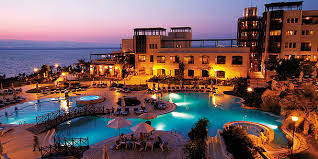Petra
Situated between the Red Sea and the Dead Sea and inhabited since prehistoric times, the rock-cut capital city of the Nabateans, became during Hellenistic and Roman times a major caravan centre for the incense of Arabia, the silks of China and the spices of India, a crossroads between Arabia, Egypt and Syria-Phoenicia. Petra is half-built, half-carved into the rock, and is surrounded by mountains riddled with passages and gorges. An ingenious water management system allowed extensive settlement of an essentially arid area during the Nabataean, Roman and Byzantine periods. It is one of the world's richest and largest archaeological sites set in a dominating red sandstone landscape. The Outstanding Universal Value of Petra resides in the vast extent of elaborate tomb and temple architecture; religious high places; the remnant channels, tunnels and diversion dams that combined with a vast network of cisterns and reservoirs which controlled and conserved seasonal rains, and the extensive archaeological remains including of copper mining, temples, churches and other public buildings. The fusion of Hellenistic architectural facades with traditional Nabataean rock-cut temple/tombs including the Khasneh, the Urn Tomb, the Palace Tomb, the Corinthian Tomb and the Deir ("monastery") represents a unique artistic achievement and an outstanding architectural ensemble of the first centuries BC to AD. The varied archaeological remains and architectural monuments from prehistoric times to the medieval periods bear exceptional testimony to the now lost civilisations which succeeded each other at the site.
Attractions
Deep within the deserts of Jordan lies the ancient city of Petra. Through a narrow gorge it emerges into view, revealing awe-inspiring monuments cut into the surrounding cliffs. What is this astonishing city? Who built it, and why?
Two thousand years ago, Petra stood at a crossroads of the ancient Near East. Camel caravans passed through, loaded with spices, textiles and incense from distant regions--and through such commerce, the city flourished. Its people, the Nabataeans, harnessed precious water, enabling the population to soar to perhaps 20,000.
The Nabataeans also erected monumental tombs, memorializing their kings and leaders. But over time political control changed, and so did trade routes. Eventually the city fell silent, forgotten by the outside world.
Today archaeologists are discovering clues to Petra's past. The spectacular objects displayed here, many unearthed by recent excavations, shed new light on this extraordinary desert city.All the main freestanding and rock-cut monuments and extensive archaeological remains within the arid landscape of red sandstone cliffs and gorges lie within the boundaries of the property that coincide with the boundaries of the Petra National Park. The monuments are subject to ongoing erosion due to wind and rain, exacerbated in the past by windblown sand due to grazing animals reducing ground cover. The resettlement more than twenty years ago of the Bdul (Bedouin) tribe and their livestock away from their former seasonal dwellings in the Petra basin to a new village at Umm Sayhun was aimed in part at arresting this process.

